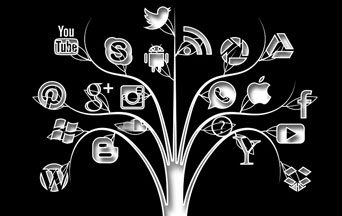 Marketers have long understood that one of the most powerful weapons in their arsenal is fear created by anxiety. While anxiety is not properly fear, it does trigger fear, which in turn activates our primal instincts—the fight-or-flight syndrome.
Marketers have long understood that one of the most powerful weapons in their arsenal is fear created by anxiety. While anxiety is not properly fear, it does trigger fear, which in turn activates our primal instincts—the fight-or-flight syndrome.
Anxiety can provoke many different types of fear: fear of missing out; fear of failure; fear of disgrace or fear of rejection. These are only a few of the fears evoked in mobile apps intending to motivate users, and app developers now admit to provoking anxiety precisely with the intent of addiction.
There has been much concern about the addictive nature of electronic devices and their deleterious effects upon users. These effects can easily be observed in many who use smart phones, tablets, Fitbits or laptops. The devices are not so much the problem; what makes them addictive is the software written for them.
 Learn All About the Prophecies of Our Lady of Good Success About Our Times
Learn All About the Prophecies of Our Lady of Good Success About Our Times
Former Design Ethics & Product Philosopher at Google, Tristan Harris claims Silicon Valley tech companies are deliberately programming apps to get users hooked. They are working hard to do this by getting people to feel the need to check their devices constantly over extended periods of time. They describe this process as “brain hacking,” and while it does make them money, more importantly, it conditions the user’s way of thinking and behavior.
Harris was asked in an interview with CBS’s 60 Minutes, how this programming works. He described it as an addiction similar to a slot machine. The person evaluates what was obtained, the amount of the reward and the odds of hitting the jackpot. Over time, an app can condition and cause addiction because of the behavioral controls written in its code.
The Concept of Social Conditioning
This concept is not new. It is referred to as classical conditioning and was discovered by Russian physiologist Ivan Pavlov in the 1890s when he noticed that his dogs began to salivate anticipating food whenever he entered the room, even without food. The dogs associated his white lab coat with feeding. This is known as conditioning through positive and negative reinforcement.
Popular apps also use conditioning. Most people, for example, love to make or save money, and the fear of losing out is a strong motivator. Using monetary rewards, the app developers at the Google-owned company Slidejoy have taken the maximum advantage of this by making it fun to be rewarded while being conditioned. Slidejoy currently has the highest addiction ranking of all apps by garnering an impressive six-days-per-week of engagement for cash and gift cards for using a smart phone. This ranking beats out social media giant Facebook, that only ranks second in addiction, but possesses 3,100 percent more users.
The positive conditioning is done through rewards, which is to make money, have fun, feel connected, receive likes, add new followers or be given those cute little emojis. The anxiety caused by fear of losing those rewards is the negative conditioning. There is a whole playbook of conditioning techniques programmed into apps to get people to use products for as long and as often as possible with the fear of loss moving the user to stay involved.

Capitalizing on Anxiety
The most addictive apps provide something new or very useful every day and the anxiety caused by not knowing what’s new, what’s happening or what reward was obtained causes an emotional frenzy in some users if constant access to favorite apps are denied. Addiction to apps is very common among teens, which can be seen in social media apps, which account for twenty percent of the top 100 most addictive apps.
One very popular social media app, Snapchat, has a feature called “streaks.” This refers to the consecutive days that someone sends and receives messages from the same person. This feature is so addictive that when many young people go on vacation or are unable to keep the streak going, they will give their passwords to several friends to do it for them for fear of losing the “prestige” of a long streak.
Why Did Steve Jobs Limit His Children’s Exposure to Technology?
In short, these apps create nervous habits capitalizing on anxiety, emotions, and fear—primal instincts.
Writing Code to Influence the Brain
Knowing that the average person checks their mobile device every 15 minutes, for example, Larry Rosen and his team at California State University have conducted tests that have determined that smart phones can be a constant source of increased anxiety levels.
The device causes the anxiety and the only way to get rid of that anxiety is to check the device, which in turn increases the anxiety the more it’s used.
Co-founder of app developer Dopamine Labs, Ramsay Brown, studied neuroscience before becoming a programmer. He says that “a computer programmer who now understands how the brain works knows how to write code that will get the brain to do certain things.”1 He does this by creating algorithms that determine the best time to give a user a reward that has no actual value, but that trigger the brain to desire more of the same.
Many users are unwittingly part of experiments by app developers, in which algorithms are developed to know when and how much of a reward to give people. This helps alter the users’ behavior to conform to what the developer wants them to do.
Bringing Out the Tribal Side
Thus, Silicon Valley technology is conditioning the thoughts, feelings and impulses of people through anxiety. The effect of this technology tends to have negative social and moral implications that affect the general public. For example, social media apps have been conclusively identified as causing a decline in the overall well-being of users. Studies have also shown these apps affect personal relationships, weaken family ties and diminish the ability to focus among users. When anxiety is increased, it tends to cause more depression and even disrupt sleep patterns.
A study titled Envy on Facebook: A Hidden Threat to Users’ Life Satisfaction?, clearly establishes that Social Networking Sites (SNS) elevate anxiety by offering “…users easy and transparent means to compare and ‘benchmark’ themselves against their peers, inducing them to engage in social comparison. Moreover, an asynchronous and ‘controllable’ way of communicating on SNSs creates vast possibilities for impression management, with SNS members often over-emphasizing their achievements”.2
While the physiological and social effects of addictive apps are matters of great concern, the moral consequences are much more important and not revealed to the end user. Unfortunately, app developers often ignore these aspects in the frenzied race to appear as great achievers, sell ever more sophisticated programs and gain greater profits.
The real game however is a vicious battle for the mind in which the user pays a very dear price. It is a cruel competition for control of man’s primal instincts. Provoking these instincts does little to encourage the practice of virtue or the performance of great feats for the good of humanity; sadly, they tend to bring out the brutal and tribal side of people that furthers the decay of today’s uncivil society.

